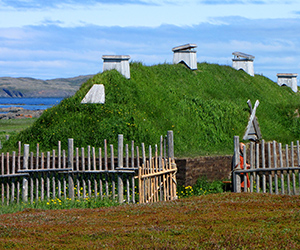CANADA HISTORY - War
New France
The year 1689 saw the beginning of the series of conflicts between Britain and France, which is sometimes called the Second Hundred Years' War. In that year the War of the League of Augsburg (called by Americans King William's War) broke out in Europe. Inevitably it was fought on the western as well as the eastern side of the Atlantic, and French and English colonists were soon at each other's throats in a struggle, which was embittered by the religious hatreds existing between Puritan New England and Roman Catholic New France.
It was fortunate for the French colony that this same year 1689 saw the return as Governor of the old but formidable veteran Count Frontenac, (He was now 69. He had served a previous term as Governor, 1672-82.) perhaps the stoutest defender it ever had. During the winter of 1689-90 Frontenac sent out three war parties over the snow against the frontiers of the English colonies. The blows struck by these expeditions goaded New England and New York into making a great effort to clear the French from America. In 1690 they produced a grand design for an attack upon New France and in particular upon the centre of French power, the town of Quebec.
The English colonies were far stronger than New France in population and in wealth. Luckily for the French, however, the English were disunited and full of mutual jealousy. In these circumstances, the courage, sound leadership and effective organization of the French community enabled it to resist its aggressive and numerous neighbours not only in 1690, but for two generations afterwards. Its autocratic system of government, while certainly adverse to the progress of the colony in the long run, was favourable to military efficiency. When at last New France fell it was not the American colonies that conquered it, but a great armament dispatched from England, backed and transported by the Royal Navy.
The English colonies' plan for the campaign of 1690 was conceived on lines similar to those followed with success seventy years later; but the military resources of the colonies at this time were unequal to carrying out such a great conception. The intention was to make a double attack. A land expedition was to move up the line of the Hudson River and Lake Champlain against Montreal; while, simultaneously, a seaborne force was to sail up the St. Lawrence and attack Quebec. The command of this latter enterprise was given to Sir William Phips, a "rude sailor" who owed his reputation and his knighthood to his success in salvaging the cargo of a wrecked Spanish treasure galleon, and had little military Experience. Phips' attempt to carry out the scheme produced one of the most dramatic episodes in the early history of Canada.














